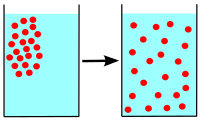
Photo from wikipedia
Abstract Wave breaking in the ocean affects the height of extreme waves, energy dissipation, and interaction between the atmosphere and upper ocean. Numerical modelling is a critical step in understanding… Click to show full abstract
Abstract Wave breaking in the ocean affects the height of extreme waves, energy dissipation, and interaction between the atmosphere and upper ocean. Numerical modelling is a critical step in understanding the physics of wave breaking and offers insight that is hard to gain from field data or experiments. High-fidelity numerical modelling of three-dimensional breaking waves is extremely challenging. Conventional grid-based numerical methods struggle to model the steep and double-valued free surfaces that occur during wave breaking. The Smoothed Particle Hydrodynamics (SPH) method does not fall prey to these issues. Herein, we examine the SPH method’s ability to model highly directionally spread overturning breaking waves by numerically reproducing the experiments presented in McAllister et al. (2019). We find that the SPH method reproduces the experimental observations well; when comparing experimental and numerical measurements we achieve coefficient of determination values of 0 . 92 − 0 . 95 , with some smaller-scale features less well reproduced owing to finite resolution. We also examine aspects of the simulated wave’s geometry and kinematics and find that existing breaking criteria are difficult to apply in highly directionally spread conditions.
Journal Title: Ocean Modelling
Year Published: 2021
Link to full text (if available)
Share on Social Media: Sign Up to like & get
recommendations!